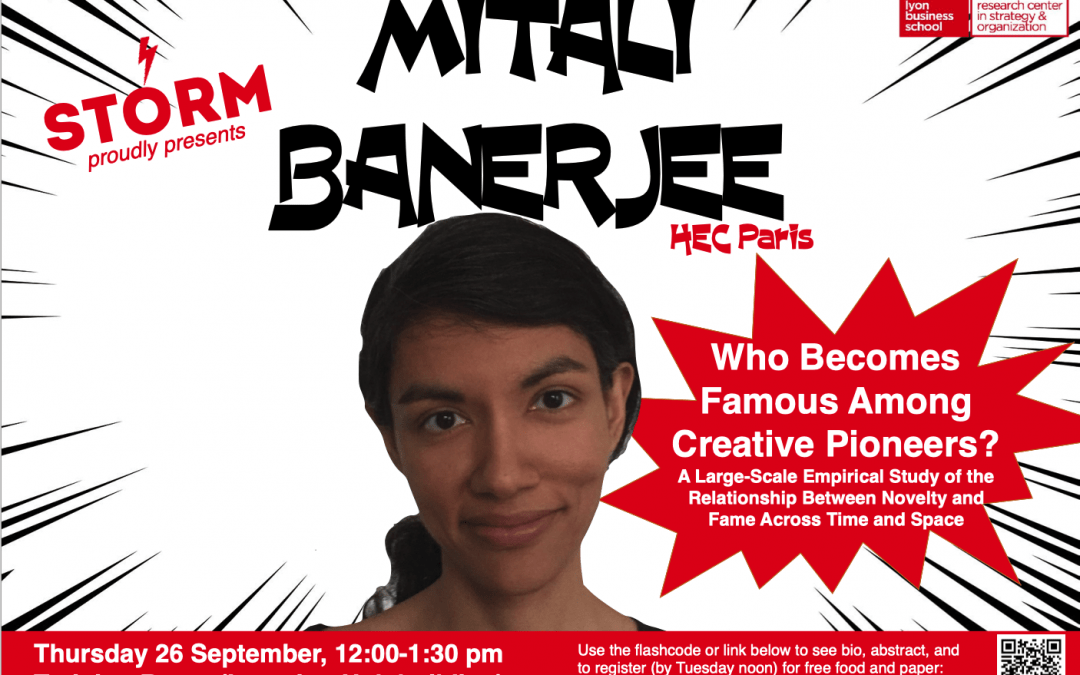Who Becomes Famous Among Creative Pioneers? A Large-Scale Empirical Study of the Relationship Between Novelty and Fame Across Time and Space
We build and test a theoretical framework to address a fundamental question – what is the relationship between an innovator’s fame and novelty? Focusing on fame at the level of the artist, rather than the work, we develop a theory that allows us to hypothesize the relationships between an artist’s fame and the creative production over the course of her entire career. We test our model in the context of the early 20thcentury pioneers of modern art. We create and validate an objective measure of novelty of over 7000 paintings by combining advances in machine learning with expert measures of creativity. We find that artists with greater average novelty in their paintings are less likely to be famous. In addition, we find that an artist with higher peak novelty is more likely to be famous. A key implication of this result is that innovators recognized as pioneers of paradigmatic shifts in a culture are likely to be more conventional rather than novel. These results form a comprehensive picture of the relationship between fame and novelty over time, and provide a foundation for further research.
Don’t miss Mitali’s interview, by our fabulous PhDs
Interview by emlyon Ph.D. student Laura Dupin and STORM Post-doctoral fellow Olga Novoselova. Editing by emlyon Ph.D. student Laura Dupin.


